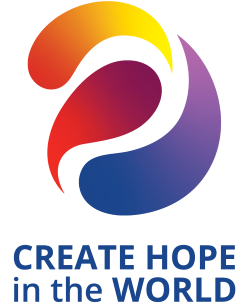https://kchc.ca/weller-avenue/pathways-to-education/the-pathways-to-education-model/
Pathways to Education started as a program in 2001 in the Regent Park neighbourhood of Toronto. At the time, the dropout rate for youth in this area was over 50%, and only one in five students were continuing on to post-secondary education. Recognizing the multiple challenges and barriers to education that youth in the Regent Park area face, the Regent Park Community Health Centre, together with schools and other community partners, developed a holistic approach with four key program pillars.
The ‘Four Pillars’
Tutoring
Tutoring sessions focus on homework and study assignments as well as prepared exercises and other learning activities to help students develop as competent learners, while boosting literacy, numeracy, and general knowledge. Tutoring in core subjects (e.g. English, French, math, science, history, geography) is provided by volunteers four nights a week in a safe, social learning environment. Tutoring volunteers are supervised and supported by Pathways to Education staff and come from a range of backgrounds.
Mentoring
Structured group mentoring is provided for students to provide pro-social and positive experiences where youth can further develop social skills including problem-solving, team building, and communication. As students enter Grades 11 and 12, this pillar shifts to focusing on career mentoring and specialty topics. Pathways to Education staff recruit and train volunteer mentors, who are typically university or college students, professionals, and
community residents.
Financial Support
Pathways to Education financial supports are designed to remove financial barriers that hinder school participation. Available supports include bus tickets for transportation to and from school and vouchers for school lunches. Students who fail to attend classes or Pathways tutoring and mentoring activities may lose their eligibility for these supports. Pathways to Education also provides a financial incentive to participating students in the form
of a $500 bursary for each year, to a maximum of $2,000 for post-secondary education or training.
Advocacy
Each student is assigned a Student Parent Support Worker (SPSW), who monitors school attendance, academic progress, and program participation while helping the student build stable relationships with parents, teachers, and other students. These Pathways to Education staff members work closely with school administrators and teachers in order to address academic issues and are expected to be familiar with the school curricula, culture and policies. The Support Worker advocates on behalf of the student, keeps parents connected with the program, and liaises with tutors and mentors
Tutoring sessions focus on homework and study assignments as well as prepared exercises and other learning activities to help students develop as competent learners, while boosting literacy, numeracy, and general knowledge. Tutoring in core subjects (e.g. English, French, math, science, history, geography) is provided by volunteers four nights a week in a safe, social learning environment. Tutoring volunteers are supervised and supported by Pathways to Education staff and come from a range of backgrounds.
Mentoring
Structured group mentoring is provided for students to provide pro-social and positive experiences where youth can further develop social skills including problem-solving, team building, and communication. As students enter Grades 11 and 12, this pillar shifts to focusing on career mentoring and specialty topics. Pathways to Education staff recruit and train volunteer mentors, who are typically university or college students, professionals, and
community residents.
Financial Support
Pathways to Education financial supports are designed to remove financial barriers that hinder school participation. Available supports include bus tickets for transportation to and from school and vouchers for school lunches. Students who fail to attend classes or Pathways tutoring and mentoring activities may lose their eligibility for these supports. Pathways to Education also provides a financial incentive to participating students in the form
of a $500 bursary for each year, to a maximum of $2,000 for post-secondary education or training.
Advocacy
Each student is assigned a Student Parent Support Worker (SPSW), who monitors school attendance, academic progress, and program participation while helping the student build stable relationships with parents, teachers, and other students. These Pathways to Education staff members work closely with school administrators and teachers in order to address academic issues and are expected to be familiar with the school curricula, culture and policies. The Support Worker advocates on behalf of the student, keeps parents connected with the program, and liaises with tutors and mentors
Results
The impact of Pathways to Education is clear. In Regent Park, dropout rates decreased from 56% to 12%: half that of the Toronto and provincial averages. Also, the number of students going on to college or university increased fourfold, from 20% to 80%.
The impact of Pathways to Education is clear. In Regent Park, dropout rates decreased from 56% to 12%: half that of the Toronto and provincial averages. Also, the number of students going on to college or university increased fourfold, from 20% to 80%.
Based on these successes, Pathways to Education has expanded to a total of 21 at-risk neighbourhoods across Canada in cities such as Ottawa, Hamilton, Halifax, Winnipeg, and Kingston.
The Pathways to Education program is also cost-effective. In their pro-bono assessment, the Boston Consulting Group found that every dollar invested in Pathways to Education would benefit society 24 times through increased graduation rates, decreased unemployment and crime rates, and improved health statistics
The Pathways to Education program is also cost-effective. In their pro-bono assessment, the Boston Consulting Group found that every dollar invested in Pathways to Education would benefit society 24 times through increased graduation rates, decreased unemployment and crime rates, and improved health statistics

